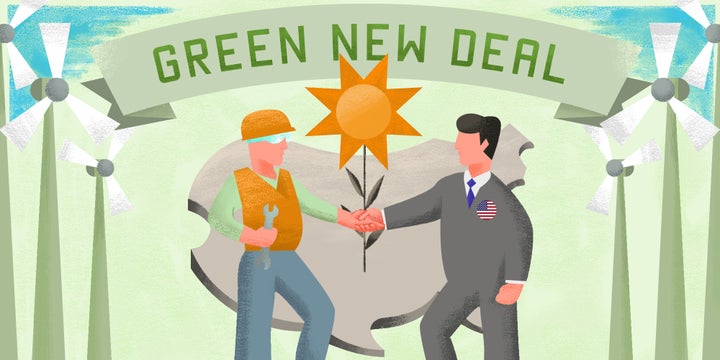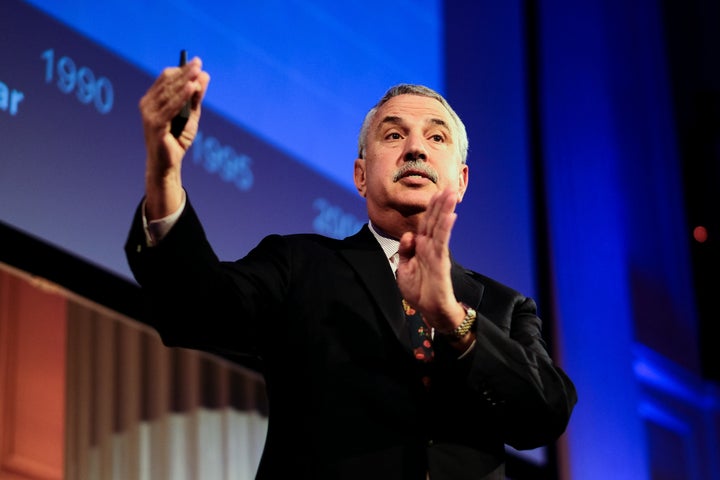
THE Democratic Party wonders why it lost to drumpf/trump-pence in 2016. It can't all be blamed on drumpf/trump-pence collusion with putin and his minions. The DNC allowing that greedy manipulative fotze debbie wasserman schultz to change the rules on campaign donations along with the favoritism shown to Clinton-Kaine contributed to the victory of drumpf/trump-pence. Regular working class, working poor, the poor as well as the middle class and retirees in traditionally blue states didn't hear or see anything in the Democratic candidates to earn their votes, but they did in the republican candidates because of their propaganda campaign. Here we are just a couple months before the 2018 midterm elections and the DNC is showing the American people they can be bought by the dirty fossil fuel-nuclear industry cabal just like the republicans can. W Virginia, Wyoming, Louisiana and Texas, red states controlled by the fossil fuel-nuclear cabal, are going to vote for republicans. But Pennsylvania, Ohio, Illinois, Indiana, Michigan, Wisconsin, Minnesota, Colorado, Montana and the Dakotas could all be blue states, persuaded by an economic plan that endorses a Green New Deal the promotes and supports R&D in clean, renewable energy that will bring good paying jobs to communities across the country. More and more Democratic candidates are endorsing the proposed Green New Deal, we will have to see if this is enough to save the predicted blue wave for the 2018 midterm elections. From HuffPost.....
Democratic National Committee Backtracks On Its Ban Of Fossil Fuel Donations
The move comes just two months after the party adopted a resolution to prohibit oil, gas and coal company contributions.
The resolution introduced by DNC Chair Tom Perez states that the party “support[s] fossil fuel workers” and will accept donations from “employers’ political action committees.” It was approved by a 30-2 vote just two months after the committee adopted another resolution prohibiting donations from fossil fuel companies by a unanimous vote.
The new resolution nods to “forward-looking employers” that are “powering America’s all-of-the-above energy economy and moving us towards a future fueled by clean and low-emissions energy technology, from renewables to carbon capture and storage to advanced nuclear technology.”
“I am furious that the DNC would effectively undo a resolution passed just two months ago just as the movement to ban fossil fuel corporate PAC money is growing (and Democrats are winning),” said R.L. Miller, president of the super PAC Climate Hawks Vote, who co-sponsored the original resolution.
DNC spokeswoman Xochitl Hinojosa said in an email that the new resolution was “not a reversal,” noting in a statement after the vote that “any review of our current donations reflects” the Democrats’ “commitment” to turn away the fossil fuel industry. The DNC has not accepted any fossil fuel donations since adopting the ban.
The key difference could be if the new resolution applies only to campaigns ― in which case, it may not annul the original resolution but would “repudiate the spirit” of the earlier one, according to Jerald Lentini, deputy director of the Democratic fundraising group It Starts Today.
“Smart Democrats are very good at splitting hairs and nitpicking,” Miller said. “It’s trying to manufacture distinctions out of whole cloth.”
Party activists ― including Christine Pelosi, the main author of the first resolution and House Minority Leader Nancy Pelosi’s daughter ― hoped the DNC would consider a second proposal this month to stop accepting contributions over $200 from individuals who work for the fossil fuel industry. That, the thinking went, would limit the influence of high-paid executives while remaining open to the working class that Democrats aim to champion. The original resolution, which Perez voted for in June, barred the DNC from accepting contributions from corporate PACs tied to oil, gas and coal companies. But it allowed for the DNC to continue accepting individual donations from workers in those industries.
Instead, the party appears to be backtracking.

The DNC’s new resolution “reaffirms its unwavering and unconditional commitment to the workers, unions and forward-looking employers that power the American economy,” according to the text.
As such, it states that the DNC “will continue to welcome the longstanding and generous contributions of workers, including those in energy and related industries, who organize and donate to Democratic candidates individually or through their unions’ or employers’ political action committees.”
The resolution, proposed as historic wildfires are scorching California, makes no mention of climate change.
Hinojosa said the resolution came in response to “concerns from Labor” that the original fossil fuel donations ban “was an attack on workers.” Just 4.4 percent of workers in the mining sector ― including coal, oil and gas ― are union members, according to the Union Membership and Coverage Database. The International Brotherhood of Electrical Workers, however, remains a strong supporter of building pipelines and donated more than $305,000 to the DNC this year.
The strength of the fossil fuel donations ban seemed in question almost immediately after it passed. The DNC refused to announce the resolution, declining to comment to HuffPost for a story that made the vote public.
At the Texas Democratic Party’s convention two weeks later, a state party official opposed a state-level proposal to ban fossil fuel donations and oppose new gas extraction, arguing that the DNC’s own resolution was not set in stone.
A.J. Durrani, a retired engineer and manager at the oil giant Shell who recently joined the national party committee, said the DNC did not include the earlier vote in the minutes from its last executive committee meeting.
“There was no mention in it,” Durrani said by phone in June. As far as he was concerned, he said, “As of right now, the DNC has not voted.”
Durrani did not immediately respond to a request for comment on Friday.
Texas Democrats ultimately voted down their proposed resolution.
In February 2017, DNC rank-and-file rejected another Pelosi resolution to forbid “registered, federal corporate lobbyists” from serving as “DNC chair-appointed, at-large members” and to reinstate former President Barack Obama’s ban on corporate PAC donations.
Obama halted contributions from PACs and lobbyists in 2008 after winning the party’s presidential nomination. But then-DNC Chair Debbie Wasserman Schultz loosened the restrictions in July 2015 before completely rolling back the ban in February 2016, nine months before that year’s presidential election.
The energy and natural resource sectors, including fossil fuel producers and mining companies, gave $2.6 million to the DNC in 2016, according to data collected by the nonpartisan Center for Responsive Politics. That’s less than 5 percent of the $56.1 million that the finance and real estate sectors ― the DNC’s largest corporate donors ― contributed that year.
Oil and gas companies spent a record $7.6 million on Democratic races in 2016. That’s a pittance compared to the $53.7 million in direct donations to Republicans, who received 88 percent of the industry’s contributions during that election cycle. Republicans have taken in 89 percent of the industry’s donations so far in 2018. That figure rises to 95 percent of the coal sector’s largesse this year.
But even as fossil fuel companies entrench with Republicans and the Trump administration continues deregulating drilling, mining and emissions, Democrats remain slow to mount a serious challenge to the industry most responsible for anthropogenic global warming.
On the state level, Washington Gov. Jay Inslee (D) failed to pass the nation’s first carbon tax even as his party enjoys complete control over the deep-blue state. New York Gov. Andrew Cuomo (D) has refused to swear off fossil fuel donations, halt new fracked gas infrastructure in the state, or support a widely hailed climate bill despite an aggressive primary challenge from progressive Cynthia Nixon and intense pressure from environmentalists.
On the national level, most bills from Democrats who purport to be Congress’ biggest climate hawks amount to half measures, either exempting major polluters such as the meat industry, directing carbon tax revenues that could be used to mitigate the effects of climate change to lowering taxes, or waiting until 2050 to end fossil fuel use.
There are some bright spots. Last September, Rep. Tulsi Gabbard (D-Hawaii) introduced the Off Fossil Fuels for a Better Future Act ― considered one of the most progressive climate bills yet proposed ― which calls for ending oil, gas and coal use by 2035, cutting all subsidies to drilling, mining and refining companies, and funding programs to help workers transition into new industries.
Alexandria Ocasio-Cortez, the likely next representative for New York’s 14th Congressional District, has vowed to push for a “Green New Deal,” a federal plan to spur “the investment of trillions of dollars and the creation of millions of high-wage jobs.” Other progressive candidates are now rallying around the Green New Deal concept and calling for nascent proposals for a jobs guarantee program to be married to renewable energy targets. That, proponents say, may be the key to wooing unions away from supporting lucrative fossil fuel projects.
The Surprising Origins Of What Could Be The ‘Medicare For All’ Of Climate Change
Insurgent progressives are reclaiming a term used, then forgotten, by centrists who seem more concerned about balanced budgets than rising seas.
The man who popularized the phrase that left-leaning Democrats now use to describe a vision for a radical government spending plan to combat climate change is a self-described centrist “free-market guy” with a New York Times column.
It was Thomas Friedman who in 2007 started calling for a “Green New Deal” to end fossil fuel subsidies, tax carbon dioxide emissions and create lasting incentives for wind and solar energy. At the dawn of the global financial crisis, the “New Deal” concept that Franklin D. Roosevelt coined 76 years earlier to describe the labor reforms and historic spending on infrastructure and armaments that pulled the United States out of the Great Depression proved attractive.
Friedman’s ideas made it into the mainstream the following year when presidential candidate Barack Obama added a Green New Deal to his platform. In 2009, the United Nations drafted a report calling for a Global Green New Deal to focus government stimulus on renewable energy projects. A month later, Democrats’ landmark cap-and-trade bill ― meant to set up a market where companies could buy and sell pollution permits and take a conservative first step toward limiting carbon dioxide emissions ― passed in the House with the promise of spurring $150 billion in clean energy investments and creating 1.7 million good-paying jobs.
But, by 2010, austerity politics hit. The cap-and-trade bill, known as the American Clean Energy and Security Act, died in the Senate. In Britain, the Labour Party, acting on a proposal that a team of economists calling themselves the Green New Deal Group drafted, established a government-run green investment bank to bolster renewable energy ― only for the conservative Tories to sweep into office months later and begin the process of privatizing the nascent institution. Balanced budgets and deficit hysteria became the dogma of governments across the developed world. Talk of a Green New Deal withered on the vine.
Today the phrase is making a comeback among the ranks of Democratic insurgents running on left-leaning platforms in 2018 primaries across the country. Far from serving as shorthand for middle-of-the-road climate policies, the decade-old slogan is being reborn as the kind of progressive platform that increasingly looks like the only policy approach capable of slowing the nation’s output of planet-warming gases and adapting to a hotter world.

Progressive activists have long complained that there is no climate change version of a “Medicare for all” bill ― legislation that serves both as a vehicle for sweeping reform and a litmus test for how far a Democratic candidate is willing to go on an issue. Yet the Green New Deal seems to be filling that three-word void.
Defining A ‘Green New Deal’
From the beginning, there were competing definitions of what “Green New Deal” meant.
Friedman’s version focused on policies that compelled the “big players to do the right thing for the wrong reasons.” He liked a lot of what Obama enacted ― including $51 billion in “green stimulus” and a $2.3 billion tax credit to clean energy manufacturing ― even after the administration shelved the Green New Deal rhetoric after the midterm election.
Sure, big-ticket policies like a carbon tax or a cap-and-trade system and sunsetting the $20 billion in subsidies to oil, gas and coal each year never came to fruition. Even the regulations the administration did achieve ― like tightening fuel economy standards and incentivizing utilities to produce more renewable energy ― disintegrated as soon as the Trump administration took over.
Subsidies for wind, solar and battery technology managed to survive proposed cuts in the tax bill Congress passed last year because Republicans in states that have come to rely on those burgeoning industries saved them. For Friedman, that is proof that lasting climate policies are ones that make private renewable energy companies powerful enough to sway politics.
“The more the market does on its own, the more sustainable it is,” he said. Even as the Trump administration dismantles Obama’s climate legacy, Friedman feels the battle shouldn’t be for more aggressive government intervention to wean the economy off fossil fuels, but on messaging that focuses on the patriotic, nation-building aspects of greening the economy.
“We are the true patriots on this,” said Friedman. “We’re talking about American economic power, American moral power, American geopolitical power. Green is geostrategic, geoeconomic, patriotic, capitalistic.”
There’s so many jobs out there that the private sector won’t create that would literally help protect our planet and save us from impending climate doom.Hawaii state Rep. Kaniela Ing
But then there’s Richard Murphy, a British tax scholar who also claims to have coined the phrase “Green New Deal” around the same time as Friedman. “I don’t even know who Tom Friedman is. If he used the term, it’s complete coincidence,” he says.
In 2007, Murphy, a political economy professor and founder of the London-based Tax Justice Network, started meeting with a cadre of newspaper editors, economists and environmentalists to discuss the coming financial crisis and how any fiscal stimulus issued in response could be used to tackle the ecological crisis already underway.
This “two-birds-one-stone” approach proposed an aggressive spending plan that called for investing public funds in renewable energy, building a zero-emission transportation infrastructure, insulating homes to conserve energy and establishing training programs to educate a national corps of workers to carry out the jobs.
Murphy’s cadre, which named itself the Green New Deal Group, was more ambiguous on how to fund all this green development. He said they supported “straightforward deficit spending” ― meaning government money that’s borrowed rather than already raised through taxes ― as well as quantitative easing, a strategy in which the government buys bonds to inject money straight into the economy. Rather than buying bank bonds to prop up private financial institutions, Murphy suggested instead establishing a green infrastructure bank that would issue bonds the government could then buy back ― a policy with enough leftist bona fides to be nicknamed the “people’s quantitative easing.” He also proposed closing tax loopholes.
The ideas caught on, and in 2010 the ruling Labour Party established a green infrastructure bank. But later that year the conservative Tories swept into office, sold the bank and scaled back renewable and energy-efficiency subsidies.
“The austerity narrative took over,” Murphy said by phone. “This is the polar opposite of the austerity narrative.”
Revival Of An Idea
Talk of a Green New Deal went quiet for years in the U.S. and Britain. But a new wave of progressive candidates, spurred by the organizing that went into Sen. Bernie Sanders’ 2016 Democratic presidential bid, began reviving the term in the past year.
It could be a winning strategy. Polls show that Americans overwhelmingly support efforts to reduce climate pollution and increase renewable energy capacity, even if it comes with a cost. Sixty-one percent of Americans who voted for Obama in 2012 and then for Trump in 2016 supported requiring a minimum amount of renewable fuels even if it increased electricity prices, according to Cooperative Congressional Election Study’s 2016 survey results analyzed for HuffPost by Data for Progress, a left-leaning think tank. That increased to 76 percent among voters who picked Obama in 2012 but sat out the 2016 race, and it surged to 85 percent among those who voted for both Obama and, in 2016, Democratic nominee Hillary Clinton.
The data showed similar support for strengthening enforcement of the Clean Air Act and Clean Water Act, even if it cost U.S. jobs. Fifty percent of Obama-Trump voters said they would support such regulations, increasing to 77 percent among voters who picked Obama then sat out the 2016 election, and 83 percent for Obama-and-Clinton voters.
Some have called for federal spending plans similar to the World War II economic mobilization to bolster renewable energy and rebuild roads and bridges to make them more resilient in extreme weather.
Alexandria Ocasio-Cortez, the Democratic Socialists of America-backed challenger who trounced Democratic Rep. Joe Crowley Tuesday night in a working-class Bronx and Queens district in New York City, outlined a similar vision. She called the Green New Deal proposed in Obama’s 2008 platform a “half measure” that “will not work.”
“The Green New Deal we are proposing will be similar in scale to the mobilization efforts seen in World War II or the Marshall Plan,” she said by email. “It will require the investment of trillions of dollars and the creation of millions of high-wage jobs. We must again invest in the development, manufacturing, deployment, and distribution of energy but this time green energy.”
Others suggested tying such a plan to a federal job guarantee, a policy that has recently gained traction among a similar cadre of candidates.
“Our infrastructure is crumbling,” said Democratic candidate Randy Bryce, a union ironworker and Army veteran running to succeed House Speaker Paul Ryan in Wisconsin’s 1st Congressional District. “We need to reinvest in our country. I can’t think of a better way than to have that be a future that’s reliant on renewable sources.”
At the heart of this policy is a call for 100 percent renewable energy. Among this group, Kaniela Ing, a state representative running in Hawaii’s 1st Congressional District, stands out as a candidate from the only state so far to adopt a 100 percent renewable energy mandate. To him, a Green New Deal provides a mechanism for meeting that goal.
“The backbone of this proposal will be a jobs guarantee, something like what FDR proposed in the Second Bill of Rights,” he said by phone. “There’s so many jobs out there that the private sector won’t create that would literally help protect our planet and save us from impending climate doom.”
Other candidates were more vague. Kevin de Leon, the California state senator and union-backed progressive who is facing off against U.S. Sen. Dianne Feinstein, a fellow Democrat, did not identify specific proposals for federal spending policies on climate. But he hinted that he would support large-scale federal spending to bolster a renewable infrastructure push, agreeing that Republican concerns over the deficit ― the wellspring of austerity politics ― proved bogus as the GOP-controlled Congress passed a massive tax cut law last year.
Left-leaning visions for a Green New Deal have even gained traction in state-level races. Abdul El-Sayed, the underdog progressive running in Michigan’s gubernatorial race, proposed a green infrastructure bank to start building renewable energy projects across the state, and he said he’d use his bully pulpit to push for federal action.
“We’re thinking about it at the state level, which both gives us a level of concreteness that is helpful and also allows us to be very specific about solving these challenges encapsulated under the umbrella of Green New Deal,” he said.
“We’ve watched as our infrastructure has crumbled,” he added. “We understand the responsibility to stand up against climate change, create jobs and rebuild that infrastructure ― it’s a clear, crystalline opportunity.”
Still, some climate activists see the term as trite and ineffective. Some climate organizers say it’s time to abandon the phrase “new deal” and embrace something newer and more forward-facing.
But for others, the phrase offers a helpful entry point to a policy program that would, in essence, buck with the last 40 years of neoliberal market-based solutionism and government spendthrift.
“The Green New Deal is a great framing, and I’m glad it’s catching on, but this whole thing needs to be at least as comprehensive as the New Deal,” said Ashik Siddique, who serves on the Democratic Socialists of America’s climate working group. “We are talking about the need to transform the physical infrastructure of every sector of the economy.”
“It’s very clear that something possibly even bigger scale than that is necessary now. Getting people used to thinking of it in those terms is welcome,” he said, then he laughed. “Even Tom Friedman is talking about it.”


No comments:
Post a Comment